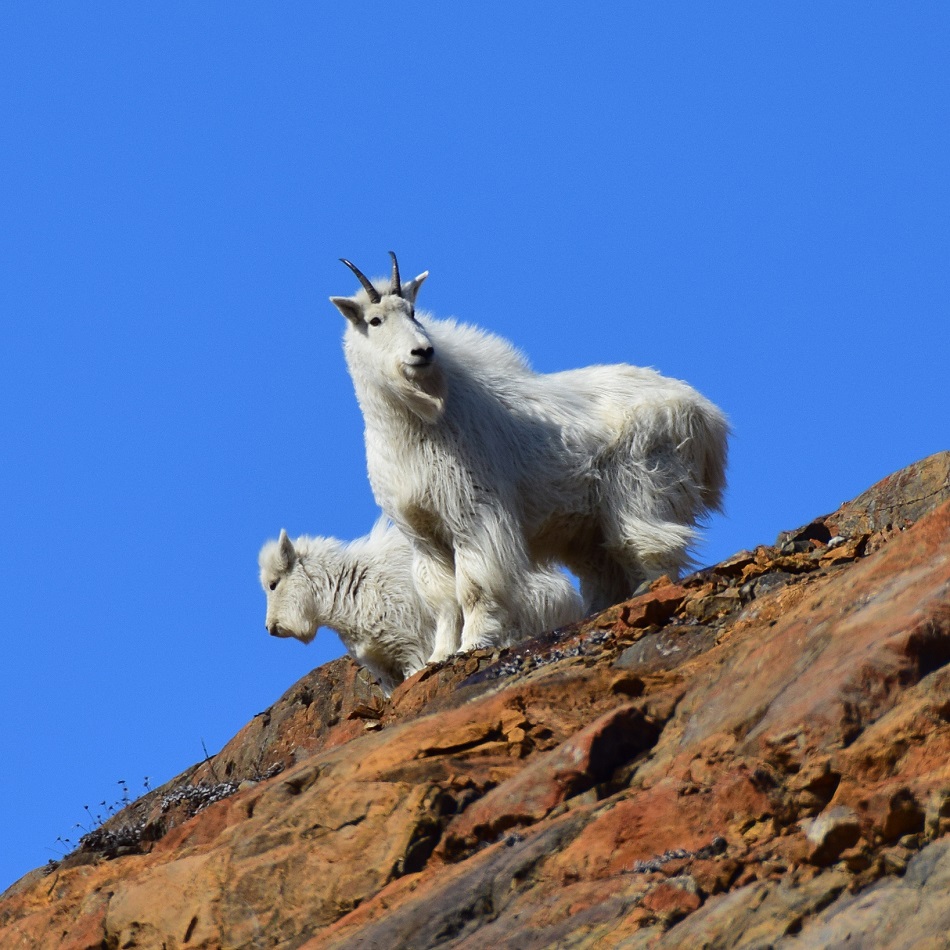
Mountain goat nanny with kid in Glacier Bay National Park. K. White ADFG photo.
In August 2020, the terrestrial wildlife team traveled to Table Mountain in a remote corner of Glacier Bay National Park in search of a hard to get to and highly valued scientific resource: fresh mountain goat poop, or pellets! A weekend storm with a forecast of 13-foot seas delayed the trip a day, but eventually, thanks to two excellent boat captains, we were dropped off at the base of Table Mountain with heavy backpacks and high hopes for finding fresh pellets.
This trip was part of a study to learn about the genetic population structure of mountain goats in Glacier Bay National Park and Kiana Young's masters thesis project at Trent University. When a goat poops, a layer of mucus containing DNA remains on the outside of the pellet. If swabbed while still fresh, we can extract this DNA for genetic analysis. We have collected pellet samples from goats across the park to identify how mountain goats may have recolonized Glacier Bay following the retreat of ice, how these groups of goats are related to each other, and which populations maybe be most vulnerable to climate change.
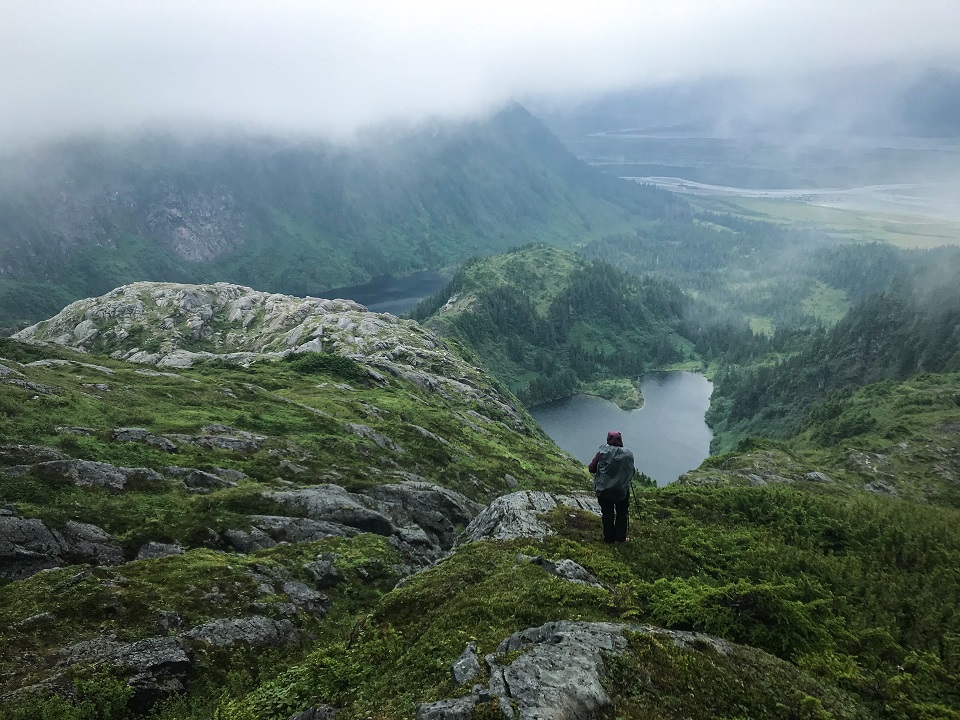
Tania Lewis, NPS Wildlife Biologist, surveying mountain goat habitat for fresh pellets on Table Mountain, Glacier Bay National Park. K. Young/NPS Photo.
The climb up Table Mountain was long and steep, but sporadic views through the clouds of Taylor Bay and Cross Sound kept us moving. It didn’t take long to learn which plants were sturdy and good to grab on to when slipping and which ones were covered in thorns. When we finally broke out of the trees into the alpine, we got a quick glimpse of the mountain ahead and saw what we were there to find – a group of mountain goats. The wind was picking up and rain was starting to fall, so we decided to camp for the night. The past weekend’s rainstorm had saturated the ground, puddles forming with every step. We scarfed down a quick freeze-dried meal and dove into our tents, hoping they were indeed waterproof.
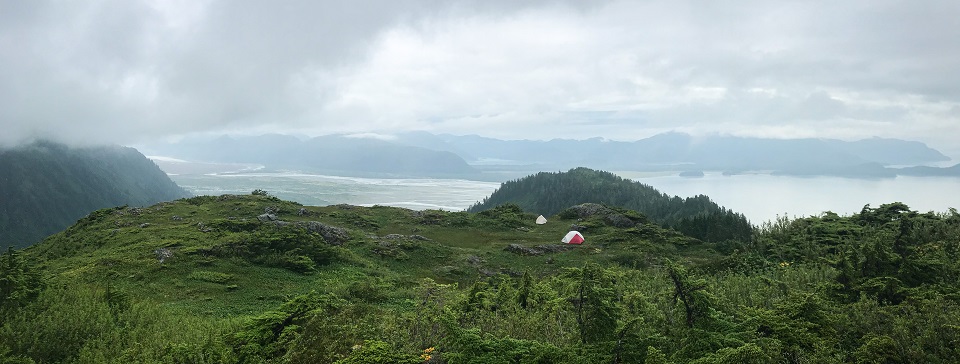 Camp at 1400 feet elevation on Table Mountain above Taylor Bay. K. Young/NPS Photo.
Camp at 1400 feet elevation on Table Mountain above Taylor Bay. K. Young/NPS Photo.After a windy, rainy night, we woke to find ourselves in a cloud. The mountain that stood above us just hours before was nowhere to be seen and was now replaced with a blanket of white. The goats were up there somewhere, though, so we packed our lunches and headed up. After climbing up and down ravines and across narrow saddles, we finally got to prime alpine mountain goat habitat of tender vegetation next to steep cliffs to escape predators. The visibility got worse and the wind started to howl.
Looking for mountain goats in a cloud felt a little like finding a needle in a haystack. As the raindrops somehow grew bigger and bigger, we tried to stay hopeful. Finally, our wishes came true when we peered over a rocky ledge to find a group of mountain goats. We dropped down to our stomachs so as not to disturb them and watched as the adults munched on lupine and kids romped around. This was a nursery group, or a group of females and young that come together during the summer. We counted 11 individuals: 9 adults and 2 kids. After a while, the goats moved over the hill and it was our time to shine. Fresh, steaming piles of mountain goat pellets – what more could we ask for? We crouched in the wind and rain and started swabbing. After an exhilarating few hours, our vials were full and our work was complete. We headed back down to our camp for the night shivering and rejoicing.
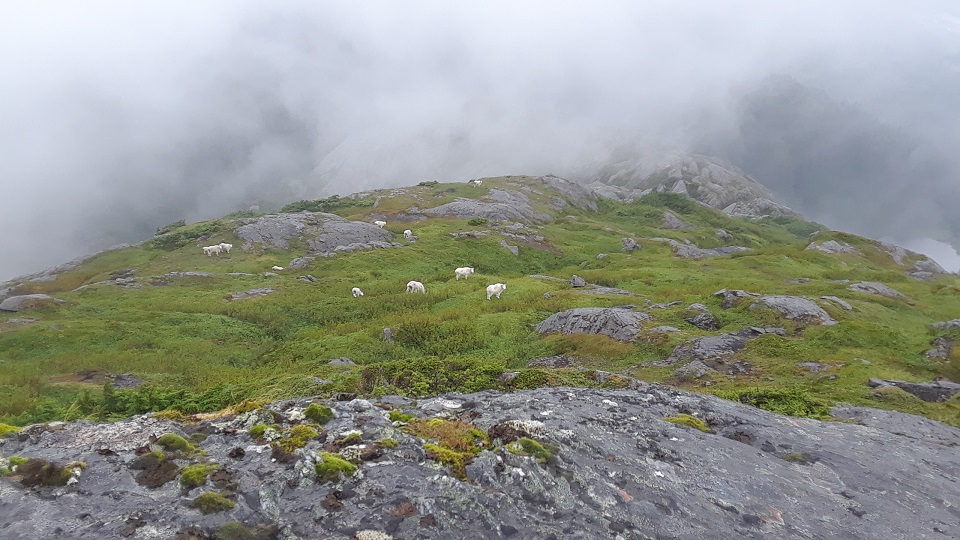
Mountain goats in the mist on Table Mountain. T. Lewis/NPS Photo.
After another windy wet night in out tents, we headed back down the mountain. Our soaked feet and heavy backpacks were barely noticeable when the sun began to peek out through the clouds. We made it to the bottom relatively unscathed and were able to soak up the sun for a bit before our evening pickup. All in all, a successful trip with 55 samples! These samples, along with others that have been collected this summer, will be sent to Trent University in Ontario, Canada for DNA extraction, genotyping, and analysis. Stay tuned for the results!
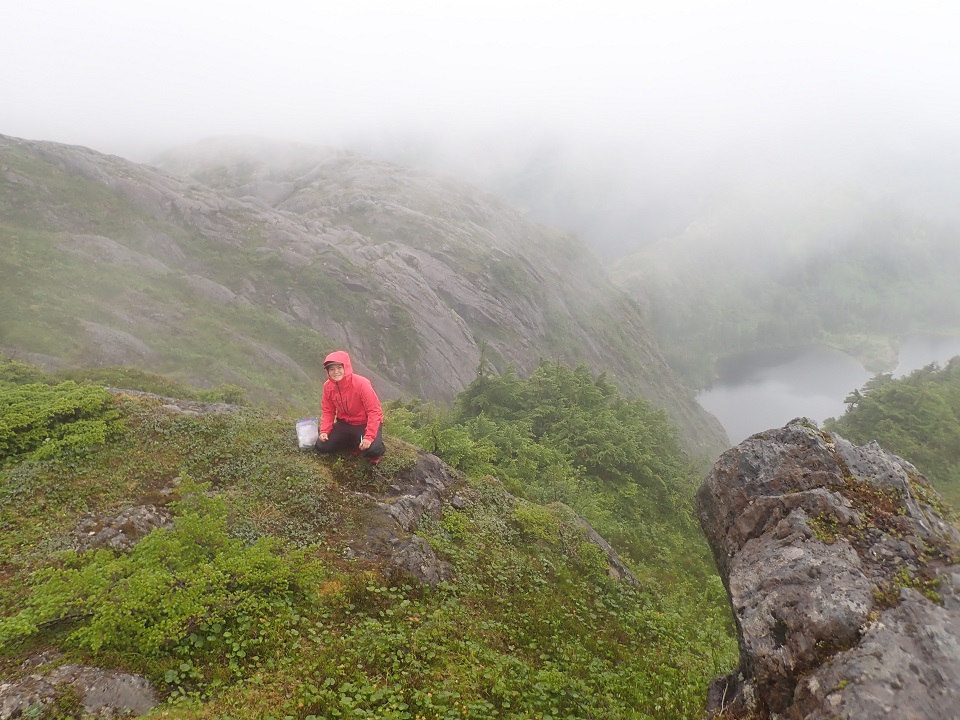 Kiana Young, NPS biological technician and Trent University graduate student, thrilled to locate and sample fresh mountain goat pellets on Table Mountain. T. Lewis/NPS Photo.
Kiana Young, NPS biological technician and Trent University graduate student, thrilled to locate and sample fresh mountain goat pellets on Table Mountain. T. Lewis/NPS Photo.For more information, see:
https://www.nps.gov/glba/blogs/mountain-goat-genetic-population-structure-in-glacier-bay-national-park-and-klondike-gold-rush-national-historic-park.htm?fbclid=IwAR1sqHiaQoigYTl3UIbGqW6ysCd1Ta03_8m7CHFjagBspdBe_vLuyOazV9A
https://www.youtube.com/watch?v=DfDMBH7OWJU
